创建和配置 AUTOSAR 软件组件
从算法模型创建一个 AUTOSAR 软件组件模型。
AUTOSAR Blockset 软件支持汽车开放系统架构 (AUTOSAR),这是一种开放且标准化的汽车软件架构。汽车制造商、供应商和工具开发人员共同开发 AUTOSAR 组件。要在 Simulink 中开发 AUTOSAR 组件,请遵循以下一般工作流:
创建 AUTOSAR 组件的 Simulink 表示。
通过优化 AUTOSAR 配置和创建算法模型内容来开发组件。
生成 ARXML 说明和算法 C 代码,用于在 Simulink 中测试或集成到 AUTOSAR 运行时环境中。(AUTOSAR 代码生成需要 Simulink Coder 和 Embedded Coder。)
在 Simulink 中创建 AUTOSAR 软件组件
要创建 AUTOSAR 软件组件的初始 Simulink 表示,您需要执行以下操作之一:
使用现有 Simulink 模型创建一个 AUTOSAR 软件组件。
将 AUTOSAR 软件组件描述从 ARXML 文件导入新 Simulink 模型中。(请参阅示例将 AUTOSAR 组件导入 Simulink。)
要使用现有模型创建一个 AUTOSAR 软件组件,首先打开一个未映射 AUTOSAR 软件组件的 Simulink 组件模型。此示例使用 AUTOSAR 示例模型 swc。
open_system('swc');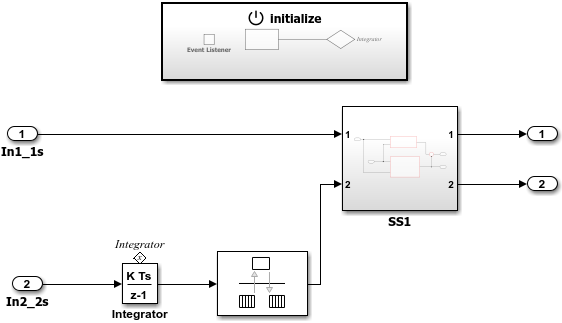
在模型窗口中的建模选项卡上,选择模型设置。在“配置参数”对话框的代码生成窗格中,将系统目标文件设置为 autosar.tlc。点击确定。
要将模型配置为映射的 AUTOSAR 软件组件,请使用 AUTOSAR 组件快速向导。在 App 选项卡上,点击 AUTOSAR 组件设计器。AUTOSAR 组件快速向导将打开。
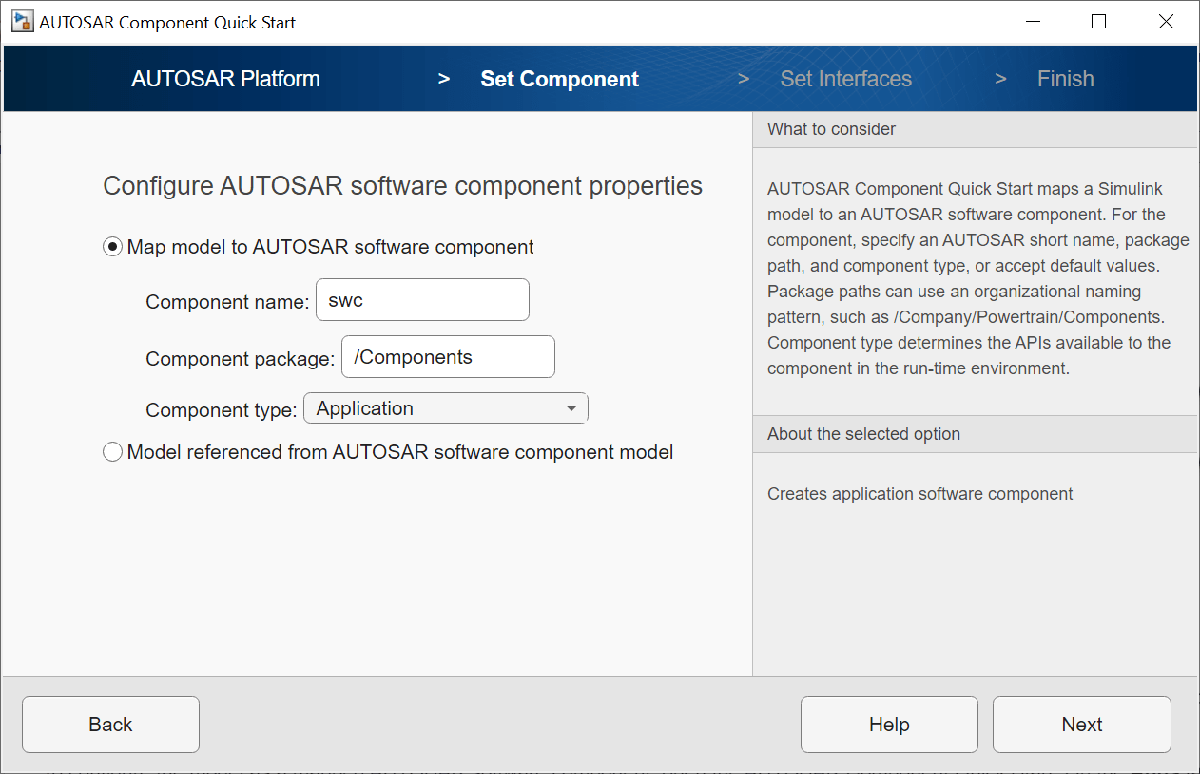
要为 AUTOSAR 软件组件开发配置模型,请完成快速向导过程。此示例接受快速向导的 AUTOSAR 平台、设置组件和设置接口窗格中选项的默认设置。
在完成窗格中,当您点击完成时,您的模型将在 AUTOSAR 代码透视中打开。
在 Simulink 中配置 AUTOSAR 软件组件
AUTOSAR 代码透视将显示您的模型,并且在模型的正下方显示代码映射编辑器。
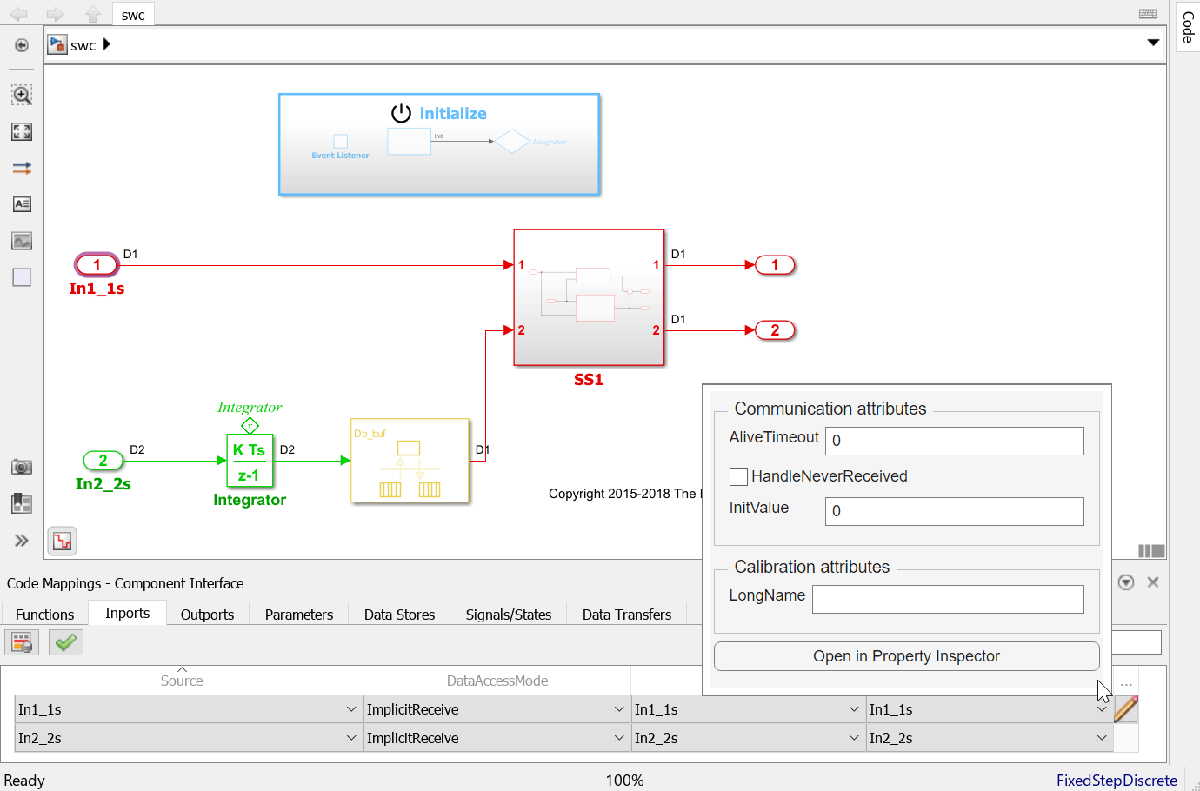
接下来,您使用代码映射编辑器和 AUTOSAR 字典来进一步开发 AUTOSAR 组件。
代码映射编辑器显示入口函数、模型输入端口、输出端口、参数和其他与 AUTOSAR 平台相关的 Simulink 元素。使用该编辑器可从 Simulink 模型角度将 Simulink 模型元素映射到 AUTOSAR 组件元素。AUTOSAR 组件元素按照 AUTOSAR 标准定义,包括可运行实体、端口和可运行实体间变量 (IRV)。
打开每个“代码映射”选项卡,并检查映射的模型元素。要修改某个元素的 AUTOSAR 映射,请选择该元素并修改其相关联属性。当您选择某个元素时,该元素会在模型中突出显示。要查看元素的附加代码和通信属性,请点击编辑图标。
要配置映射的 AUTOSAR 软件组件的 AUTOSAR 属性,请打开 AUTOSAR 字典。在代码映射编辑器中,点击 AUTOSAR 字典按钮,其图标位于最左边。AUTOSAR 字典随即会打开,并基于您在代码映射编辑器中选择和映射的 Simulink 元素显示对应的 AUTOSAR 视图。如果选择并映射了 Simulink 输入端口,字典将打开 ReceiverPorts 视图,并显示输入端口映射到的 AUTOSAR 端口。
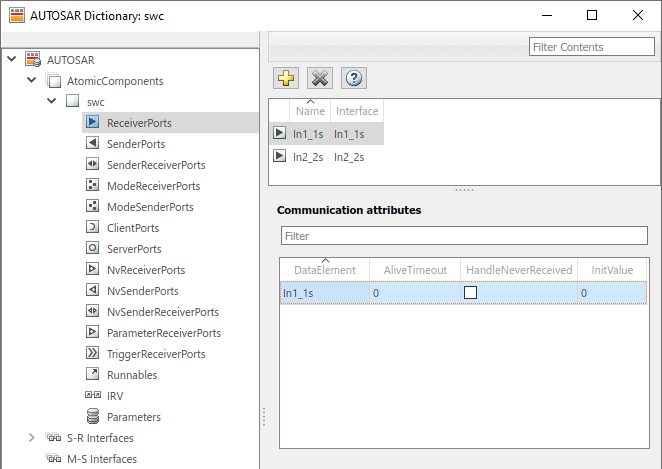
AUTOSAR 字典显示映射的 AUTOSAR 组件及其元素、通信接口、计算方法、软件寻址方法和 XML 选项。使用该字典可从 AUTOSAR 组件的角度配置 AUTOSAR 元素和属性。
打开每个节点并检查其 AUTOSAR 元素。要修改某个 AUTOSAR 元素,请选择该元素并修改其相关联属性。从模型生成的 AUTOSAR XML 和符合 AUTOSAR 标准的 C 代码反映了您的修改。
生成 C 代码和 ARXML 描述 (Embedded Coder)
如果您有 Simulink Coder 和 Embedded Coder 软件,您就可以编译 AUTOSAR 模型。编译 AUTOSAR 模型可生成符合 AUTOSAR 标准的 C 代码,并导出 AUTOSAR XML (ARXML) 描述。在模型窗口中,按 Ctrl+B,或在 AUTOSAR 选项卡上,点击生成代码。
编译完成后,将打开代码生成报告。检查报告。验证您在代码映射编辑器和 AUTOSAR 字典上所做的更改是否反映在 C 代码和 ARXML 描述中。例如,使用查找字段搜索您修改的 Simulink 模型元素和 AUTOSAR 组件元素的名称。
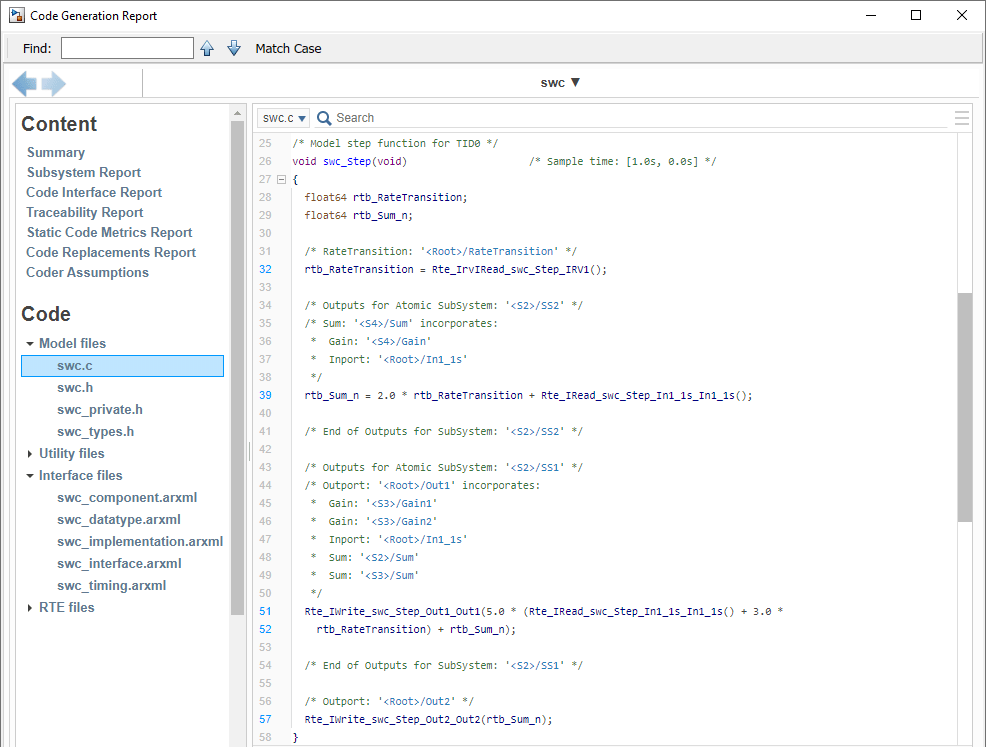
相关链接
代码生成(Classic 平台)